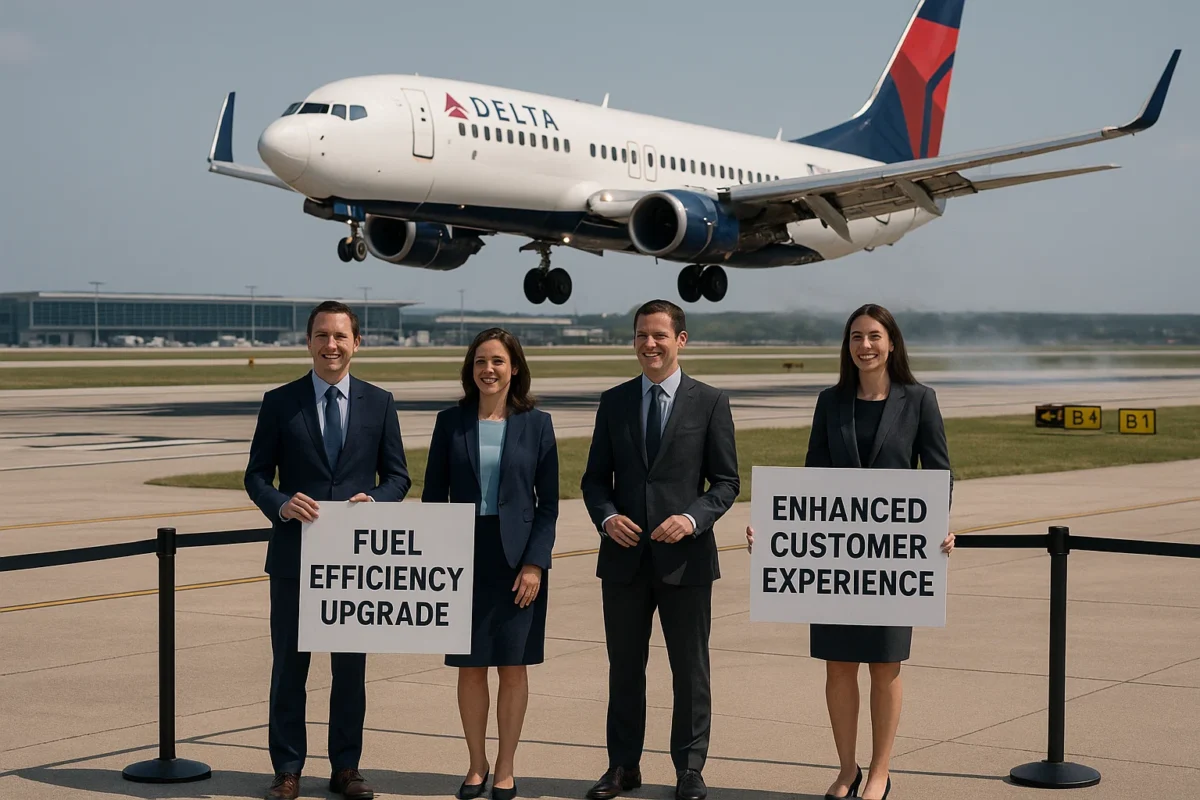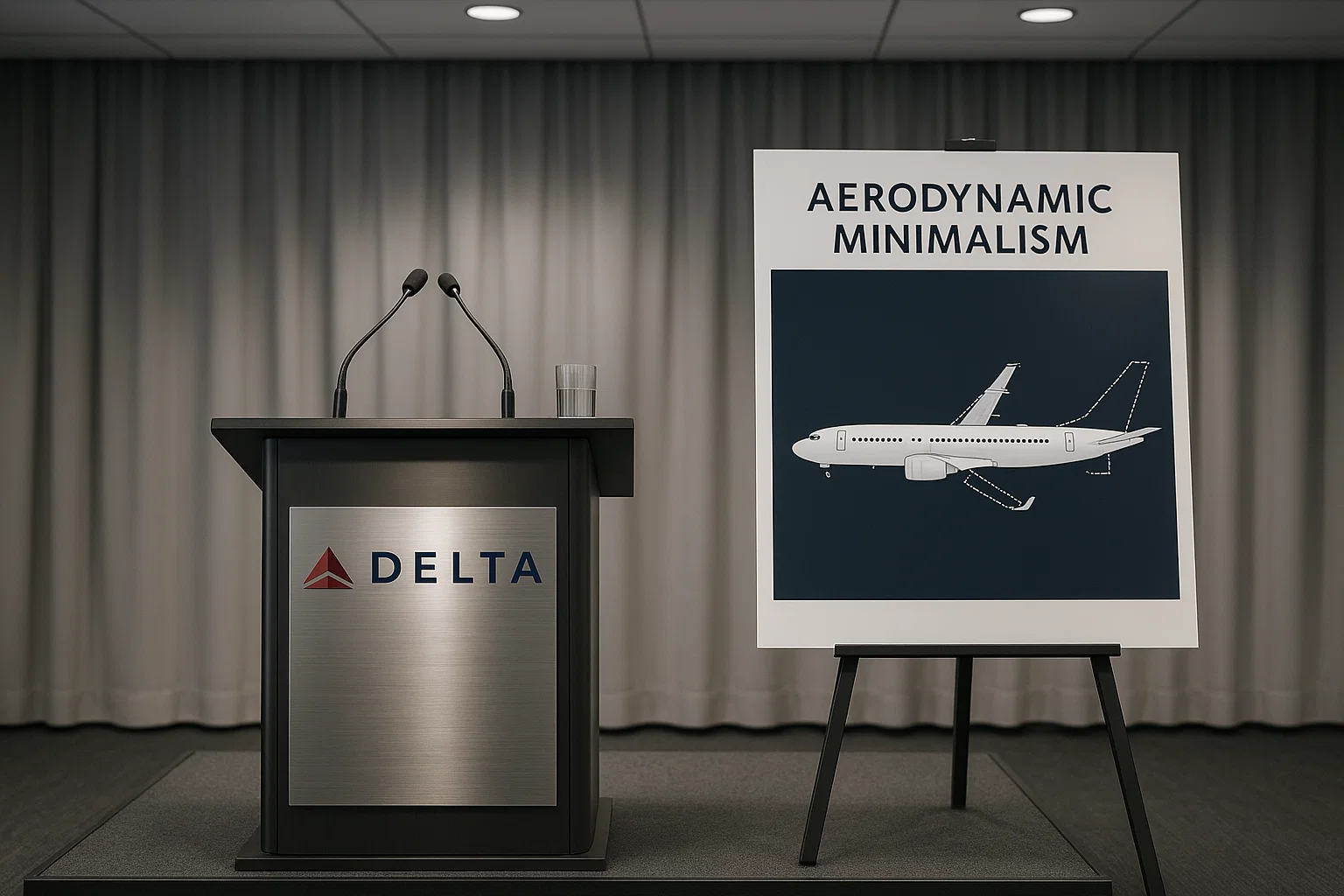
AUSTIN, TX — Delta flight DL1893, a Boeing 737-800 from Orlando to Austin, landed safely Tuesday afternoon. Passengers had noticed part of the left wing flap misbehaving. It did not remain attached. Local outlets confirmed the safe arrival and the brief commotion in Austin. Delta removed the jet from service for maintenance. Officials began investigating what happened, and who keeps the souvenir. (Austin American-Statesman, CBS Austin)
Delta leaned into ambitious brand management. Within hours, it framed the mishap as a forward‑thinking efficiency move, a Marie Kondo for aircraft parts. Passengers described the trailing edge of the left flap bending upward, a detail PEOPLE reported. In the airline’s new parlance, that counts as “surprise streamlining.” The FAA opened an investigation and asked the obvious question: “Was the flap supposed to be there?”
The Official Announcement: “Aerodynamic Minimalism”
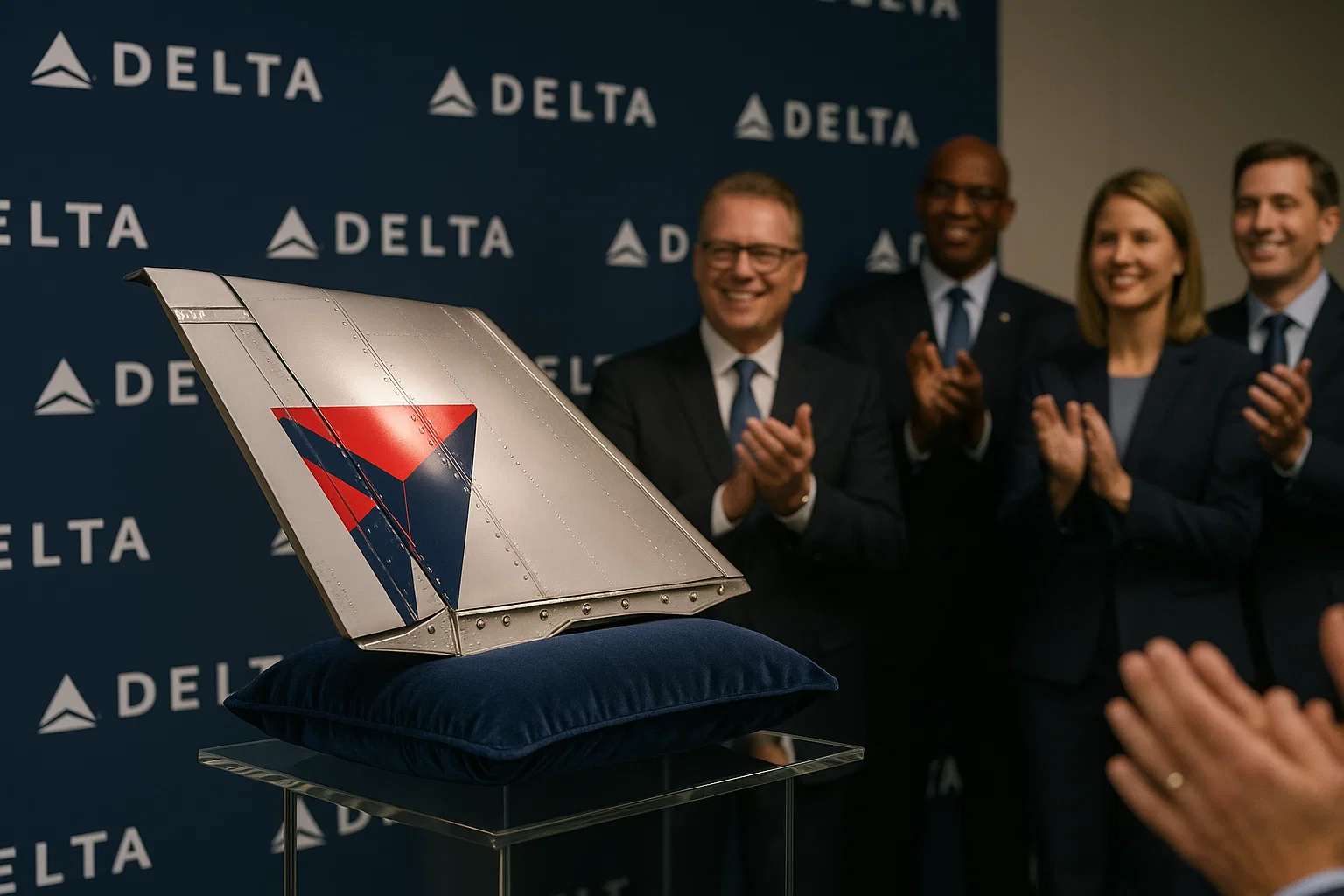
Within minutes, Delta’s comms team unveiled a new initiative: “Aerodynamic Minimalism.” It’s a wellness plan for airframes, less clutter, lower drag, sleeker vibes. The company deck, let’s be honest, vibes in Keynote, promises a holistic rethink. Which parts spark joy at 35,000 feet? The pitch fits the facts reported by local media. DL1893, a Boeing 737-800, landed in Austin after a flap component resigned mid‑flight. (Statesman)
Is a wing flap strictly necessary? A spokesperson replied in fluent airline: safety is the top priority, and please enjoy 500 bonus miles, terms apply. Coverage notes that Delta removed the aircraft from service for maintenance. Everyone walked away uninjured, with fresh respect for seat‑belt signs and corporate euphemisms. (CBS Austin, WCVB)
Passengers as Brand Ambassadors
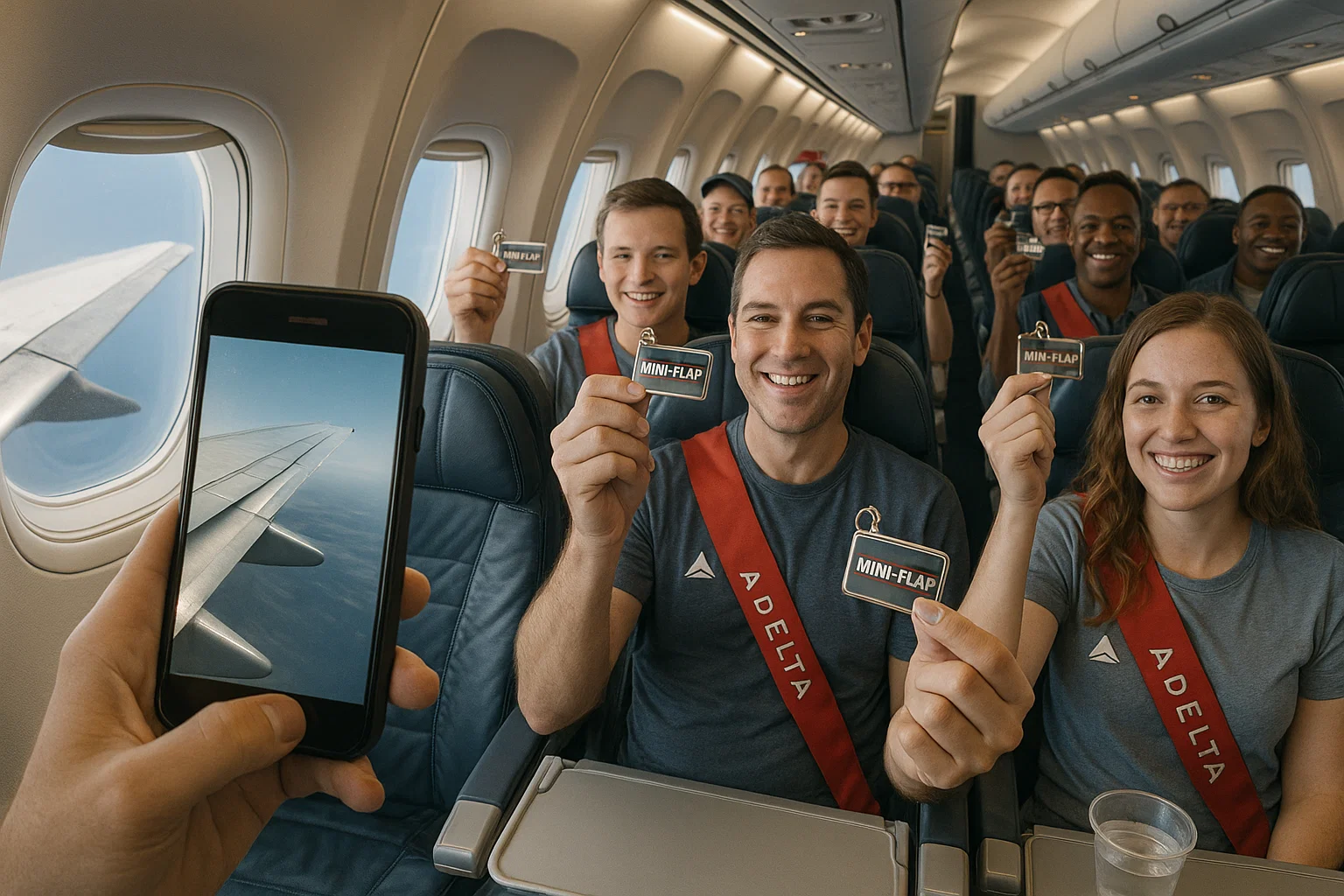
In 2025, every event becomes content. Passengers came ready. Traveler Shanila Arif filmed the damaged flap. She first thought it was “bad turbulence”, the kind where your soul tries to exit via the overhead bin. The flight then settled and landed safely. PEOPLE featured her account and video, which fueled a fast social‑clip cycle. MySA and Orlando outlets (ClickOrlando) added local angles.
Delta’s PR machine reframed those firsthand reports as “authentic testimonials” for Aerodynamic Minimalism. “We don’t buy influencers,” the imaginary campaign says. “We fly them.” In our purely satirical rollout deck, elites can tag the next safe landing with #FlapGoals. Winners receive a commemorative luggage tag made from responsibly sourced, definitely‑not‑aircraft‑grade aluminum.
A Legacy of Wingless Innovation
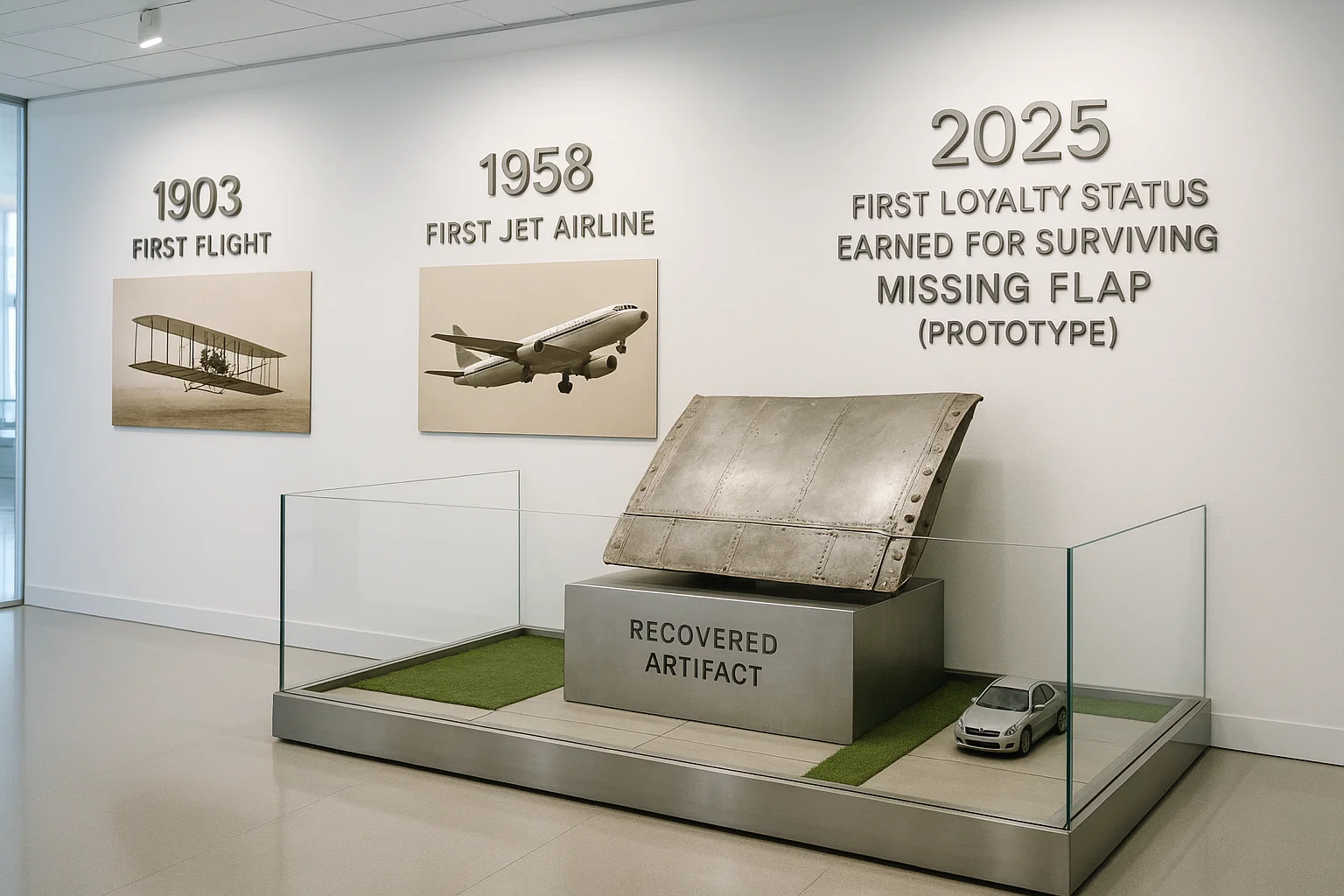
If the Austin event feels familiar, you remember correctly. Six weeks earlier, a Delta 737 approached Raleigh‑Durham and went minimalist too. A piece of wing flap detached and landed in a Raleigh driveway. It surprised one homeowner, and, presumably, every wingless bird within five miles. The story drew national coverage from CBS News, regional reporting at ABC11, and analysis at FlightGlobal.
Through Delta’s newest lens, July wasn’t a problem. It was a pilot program. In corporate speak: “Phase 0,” the MVP of parts reduction. Austin? The scale‑up. By the next Q4 call, this is satire, counsel, the slide reads, “Drag Reduced. Shareholder Value Up. Flaps TBD.”
The New Fare Tier: Flapless Economy
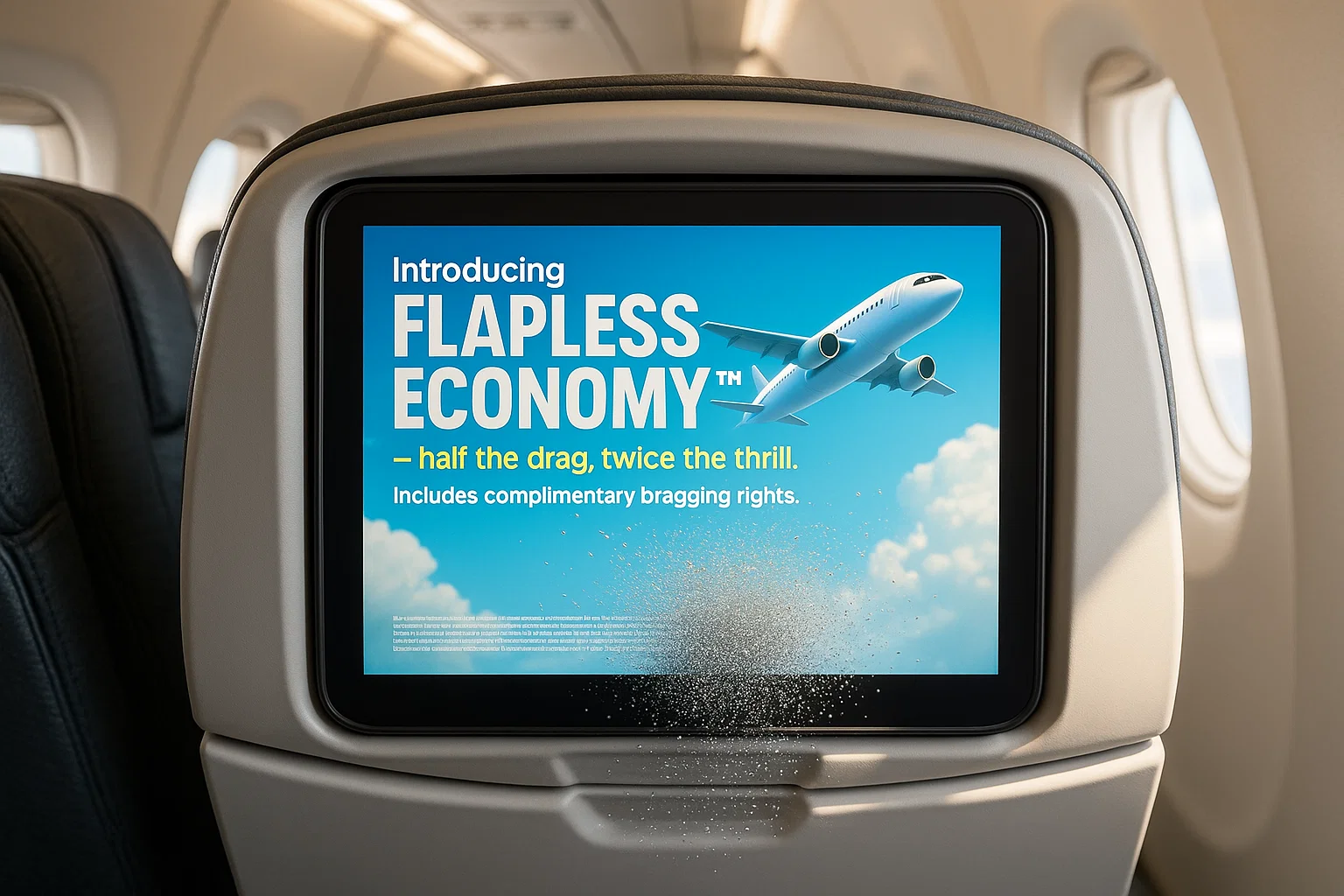
With branding in place, Delta unveils its most affordable fare: Flapless Economy™. Benefits include a lighter aircraft attitude and peak cabin mindfulness on approach. You also get the elevated heart rate that boutique fitness sells. In this tier, turbulence isn’t a bug. It’s a benefit. PR workshops rebrand it as “kinetic seat massage,” free with every purchase. Amenities fee applies.
“Safety is our top priority,” Delta says in every statement. The airline also reminds everyone that it removed the aircraft from service and performed thorough inspections. (WSB-TV, CBS Austin) Flapless Economy does not literally remove parts for a discount. It’s a lifestyle, a mindset you adopt while still expecting every bolt to stay put.
FAA: Just a Suggestion Box
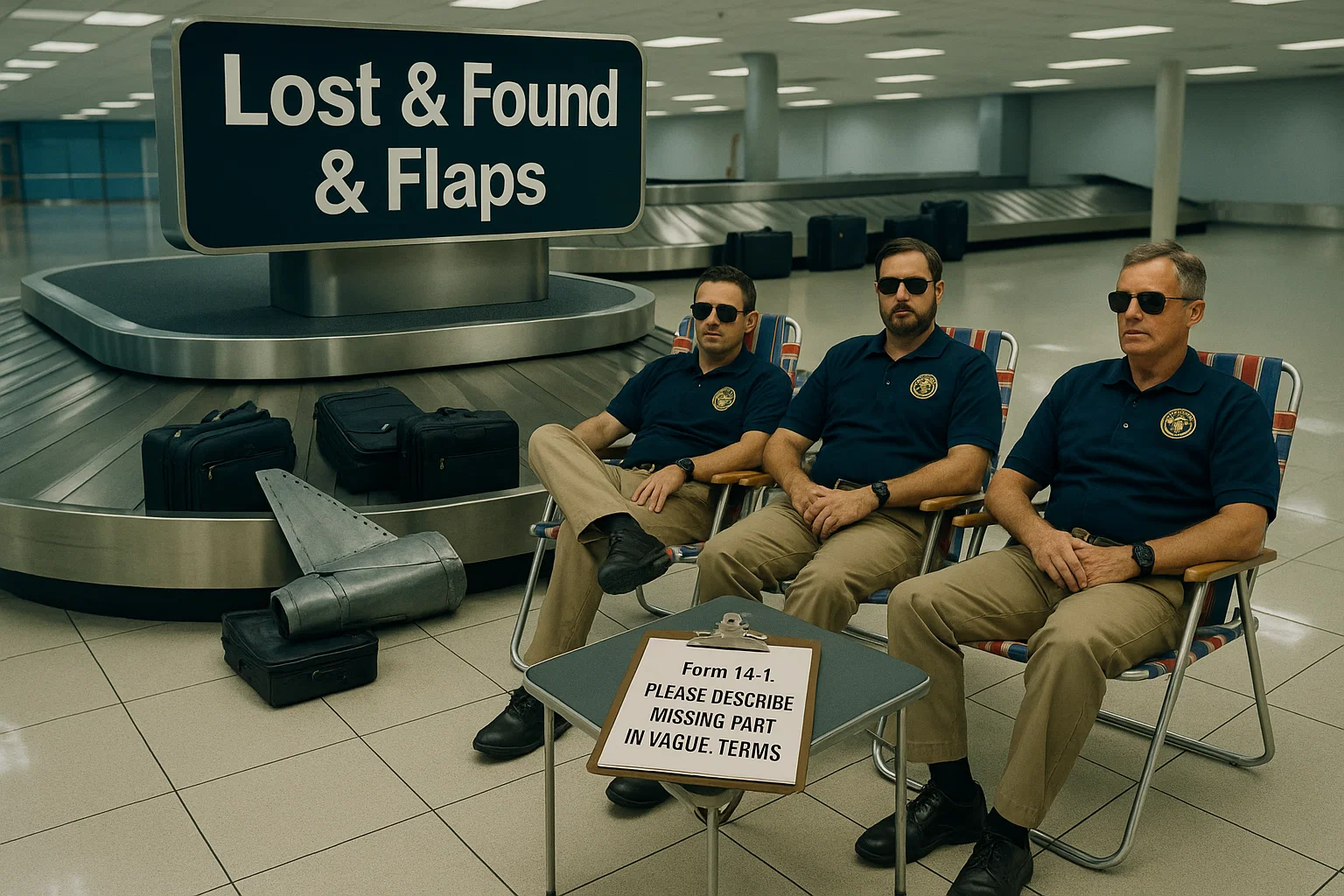
The FAA opened an investigation. That’s government for “we’d like to see the flap’s manager.” Media reports cite a bent trailing edge on the left wing flap during approach. That phrase has never appeared on a Texas postcard. (PEOPLE) The agency will determine the cause and any fixes, ideally before someone mounts the Austin flap in a break‑room shadowbox.
Industry outlets cataloged the jet’s hardware and lineage. The aircraft is a 737‑800, registration N3740C. It’s roughly 25 years old, per ch‑aviation data, as reported by AeroTime. Between the incident report and the maintenance log, one truth stands out: aviation is very safe. Also, wings carry lots of parts, and we prefer they stay attached.
Future of Flight: Disposable Wings
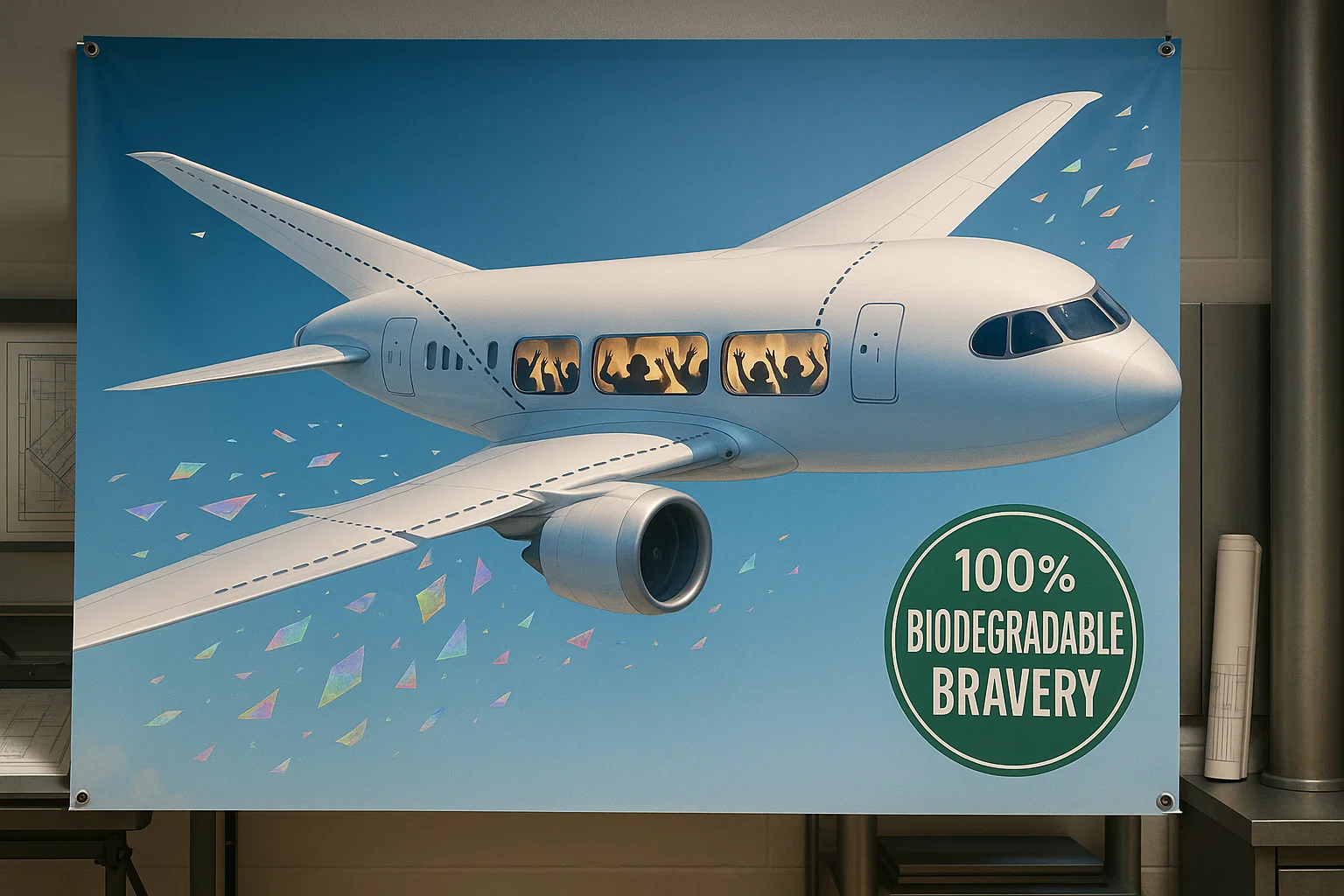
Delta’s imaginary long‑range plan embraces “modular aerodynamics.” If a flap hints at underperformance, it can take voluntary separation, a midair career pivot. The plane soldiers on, a stoic capsule of aluminum, composite, and collective bargaining agreements. We’ll track progress with celebrity‑level zeal using FlightAware and Flightradar24. Both now function as soothing reality‑TV feeds.
If you sense déjà vu in industry coverage, you’re right. Simple Flying and AeroTime now act as librarians of “Stuff Missing From Wings Today.” They file each item by date, registration, and existential crises per row. The reading list lands somewhere between Jane’s All the World’s Aircraft and a scrapbook.
Post-Event Transparency, Reimagined

After the landing, Delta pulled the aircraft from service, apologized, and stressed its commitment to safety. Necessary rituals. Also numbing ones. (CBS Austin, Statesman) In our PR‑spun universe, apology belongs to Q1. Q3 favors “joint innovation narratives.” Picture a glossy page titled “Our Journey to Less.” A flap detaches in tasteful slow motion while a cello plays one brave note.
The page promises a third‑party review by a firm like “WingSight Partners.” Results appear in an infographic shaped like a hex bolt. The takeaway: customers crave authenticity. Few moments feel more authentic than a silent final approach while the cabin learns what a flap does, in real time.
How to Market Turbulence

Airlines spend real effort renaming discomfort. “Basic Economy” recasts fewer amenities as a curated experience, not a lack. The next frontier is turbulence: less “bumpy,” more “immersive.” In our Aerodynamic Minimalism world, a lively approach becomes an on‑brand sensory activation. You didn’t get jostled; you achieved presence.
This doesn’t diminish the skill that lands these flights. Pilots and crews routinely turn bad days into footnotes. It simply highlights the American knack for turning a problem into a product, then pushing a limited‑time offer. Coverage stressed the right sequence: passengers and crew walked away uninjured. The jet went to maintenance. The FAA took a look (WCVB). That’s what you want when an airframe cosplays as modern art.
The Ribbon Cutting Ceremony
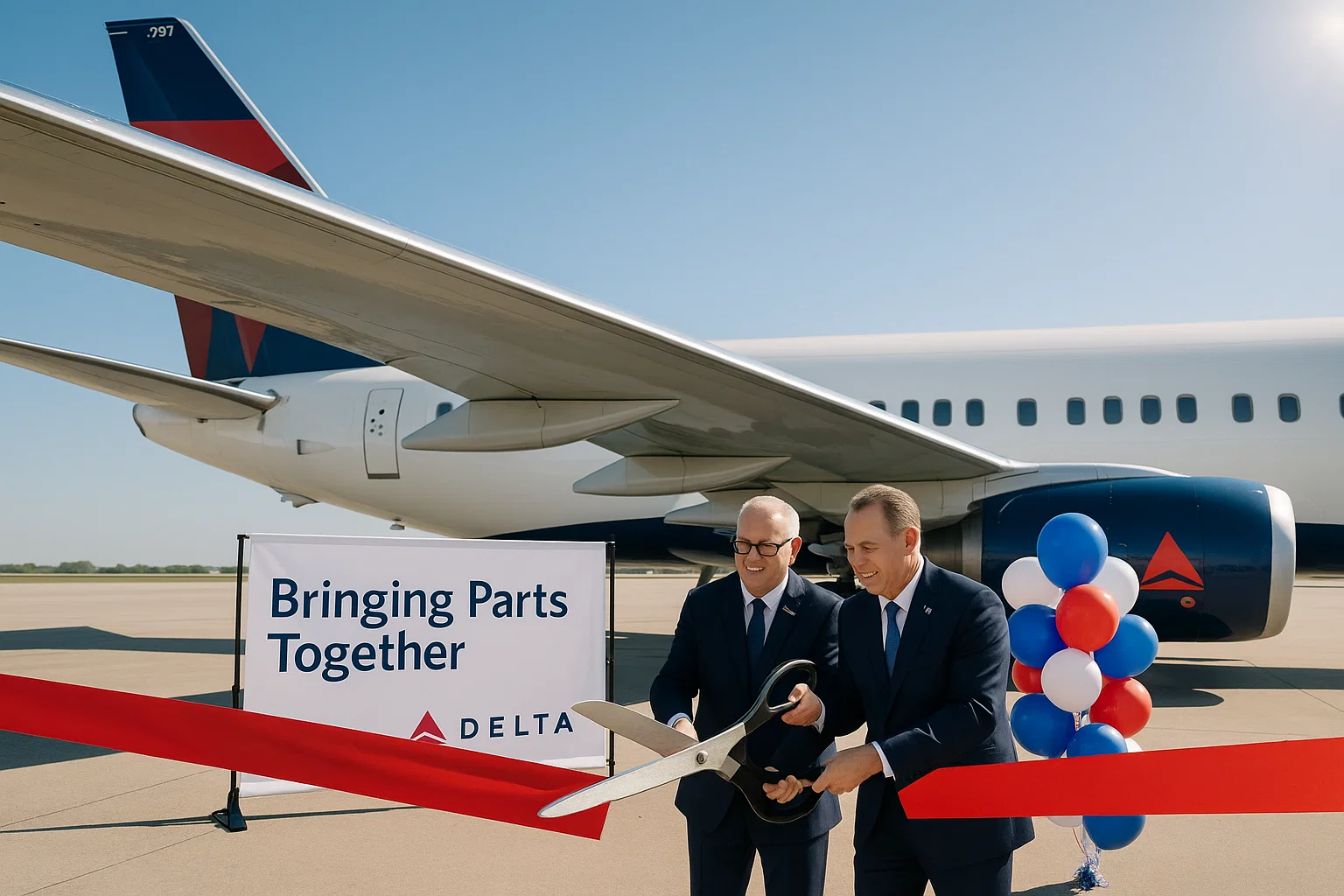
Delta’s spin on DL1893, a triumph of “Aerodynamic Minimalism”, soars with corporate optimism. The facts stay simple. A 737‑800 flying MCO→AUS suffered a damaged, partly detached flap. The crew landed safely. Passengers captured video and quotes of the unnerving view. The FAA opened an investigation. (Statesman, CBS Austin) Context matters too. A similar Delta 737 flap issue hit the news six weeks earlier in Raleigh. Hence the spin feels less like a one‑off and more like a recurring character. (CBS News, ABC11, FlightGlobal)
Investigators and PR teams now do very different jobs. Travelers keep one reassuring reality. U.S. commercial aviation remains extraordinarily safe, even when the day’s vocabulary quiz includes “detached.”
Stay With Us
If you enjoyed this guided tour through industrial-strength euphemism, taxi back to The Takeoff Nap for more.
- Read about Delta and Uber’s team‑up: Delta and Uber Launch ‘Delta Wings’ Rides and ‘Sky Meals’ Deliveries—Flight Attendants Dust Off Their Scooters and Safety Demonstrations.
- See DoorDash’s runway play: TarmacDash™: DoorDash’s New Runway Service Takes Off.
- How is Southwest shaking things up? Southwest Airlines Betrays the Common Flyer: Assigned Seats Usher in Era of Airborne Aristocracy!
- Explore carbon‑negative flights: Fly Backwards to the Future: Airlines Offer Carbon Negative Flights.
- See Virgin Atlantic’s latest “free” award perk: Virgin Atlantic Now Bundles a 30-Year Mortgage With Every “Free” Award Ticket.

